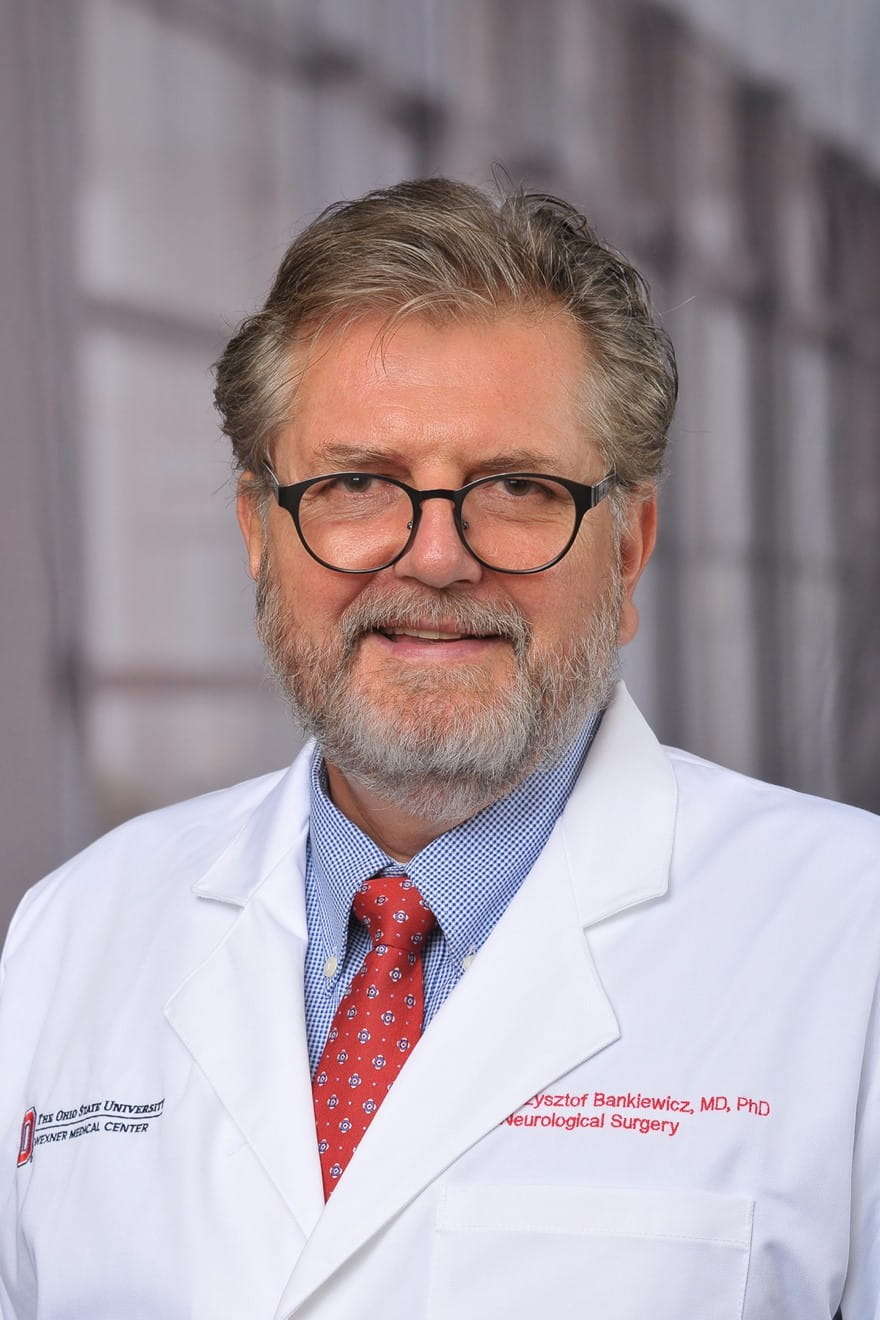June 27, 2023
COLUMBUS, Ohio – The National Institutes of Health (NIH) is incentivizing researchers to think beyond single applications of genome editing and to develop platform approaches that can be used to address multiple diseases.
With a grant totaling $22 million from the NIH’s Somatic Cell Genome Editing (SCGE) program, researchers at the Innovative Genomics Institute (IGI) at UC Berkeley, The Ohio State University Wexner Medical Center and College of Medicine and UC San Francisco are developing new approaches to treat multiple neurodegenerative diseases as well as clinical tests to help new CRISPR-based therapies reach patients.
It’s been just over a decade since the development of CRISPR genome editing by IGI founder Jennifer Doudna and collaborator Emmanuelle Charpentier. For discovering one of gene technology’s sharpest tools – the CRISPR/Cas9 genetic scissors – Doudna and Charpentier received the 2020 Nobel Prize in Chemistry.
 Dubbed “Correction of Neurological Disease via Allele Specific Excision of Pathogenic Repeats” or “CASEPR” (pronounced “case-per”), this multi-institutional project brings together a group of experts in CRISPR genome editing, neurological medicine and regulatory requirements, with the goal of reaching a clinical trial in five years.
Dubbed “Correction of Neurological Disease via Allele Specific Excision of Pathogenic Repeats” or “CASEPR” (pronounced “case-per”), this multi-institutional project brings together a group of experts in CRISPR genome editing, neurological medicine and regulatory requirements, with the goal of reaching a clinical trial in five years. In this collaborative study, researchers from the Ohio State Gene Therapy Institute will be responsible for two key components of this CRISPR-mediated therapy research program that relies on manipulation of the cell's genome.
• Project I will utilize AAV-CRISPR techniques to address Huntington's disease, with Krystof Bankiewicz, MD, PhD, as primary investigator. This is the flagship/trailblazer project, which is most likely to yield an approved Investigational New Drug application within 5 years.
• The In Vivo Resource Core, led by Victor Van Laar, PhD, is where all the preclinical animal studies will be performed using mouse models of neurological disease. These studies will benefit from the Bankiewicz lab’s years of expertise in intracranial surgery, in vivo drug delivery, and gene transfer research in animal models of central nervous system disorders.
“This highly competitive U19 grant will allow us to continue collaboration with SCGE to develop genome editing technology for Huntington’s disease and beyond. I am very pleased that data that we have developed at Ohio State helped us win this NIH award,” said Bankiewicz, who is chief scientific officer of the Ohio State Gene Therapy Institute and professor of surgery in the Ohio State Department of Neurological Surgery.
Some genetic diseases are caused by single point mutations where one letter of the genetic code is changed. But several neurodegenerative diseases, such as Huntington’s disease and amyotrophic lateral sclerosis (ALS), are caused by a different type of mutation called an “expansion repeat” where short strings of DNA code get accidentally duplicated when DNA is copied or repaired by our cells. These small, repeated duplications can transform a healthy copy of a gene into a pathogenic one, particularly if this error happens multiple times.
The challenge in designing a genomic therapy for these diseases is that there are both healthy and pathogenic copies of the gene in a patient, so a genome-editing intervention has to precisely target the gene with too many repeat copies while leaving the healthy gene untouched.
The CASEPR program investigator team includes Jennifer Doudna, Fyodor Urnov, Niren Murthy, Petros Giannikopoulos, and Ross Wilson at the IGI at UC Berkeley; Krystof Bankiewicz, Victor Van Laar, and Jerusha Naidoo from Ohio State; and Claire Clelland at UC San Francisco.
The team will employ a CRISPR technique that can be delivered in vivo and will selectively disable the pathogenic copies. The team will focus on applying this technique to Huntington’s disease and ALS, with the goal of reaching a clinical trial in five years.
The team will also compare two methods of delivering the CRISPR therapies to affected cells using both viral vectors that are commonly used in gene therapies and a non-viral approach developed at the IGI. The goal is to create a road map for a safe, reproducible approach that can be applied to other neurodegenerative diseases in the future.
“This innovative gene editing research, led by Doudna and Bankiewicz and funded by the NIH, will lead to new transformative therapies for previously incurable neurologic disorders,” said Russell Lonser, MD, director of Ohio State’s Gene Therapy Institute and professor and chair of Ohio State’s Department of Neurological Surgery.
# # #
Media Contact: Eileen Scahill, Wexner Medical Center Media Relations, Eileen.Scahill@osumc.edu
